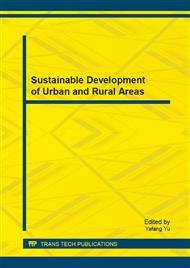p.31
p.36
p.40
p.47
p.53
p.60
p.65
p.69
p.75
An Inquiry of Teaching Methods Based on the Psychological Needs of Comfort in Small Architectural Space
Abstract:
In architectural designs teaching process, to enable the students to think in complete accord with the users thinking logic, under the premise of the effect of a comfortable usage, teaching process needs to return to the user's needs as the main purpose. By studying the psychological needs of the user, the sense of comfort of building space in people's daily life can be explored, and by integrating this approach into the teaching of architectural design , different types of spaces can be divided from the perspective of human behavior patterns,. After the investigation and analysis in different types of space which people have different psychological needs, and the method for determining the sense of comfort, we can make analogies and inferences with examples, propose comfort and design guidelines under specific behavioral environment, so as to achieve the humanization of space and provide a more effective teaching method of authentication in the teaching of design.
Info:
Periodical:
Pages:
53-59
Citation:
Online since:
January 2014
Authors:
Price:
Сopyright:
© 2014 Trans Tech Publications Ltd. All Rights Reserved
Share:
Citation:


